Asparagus is one of those crops that requires a decent dose of patience to grow.
This perennial veggie takes a few years before you can begin harvesting, so it can be devastating when you finally make it to picking time and you notice the spears are thin and weak.
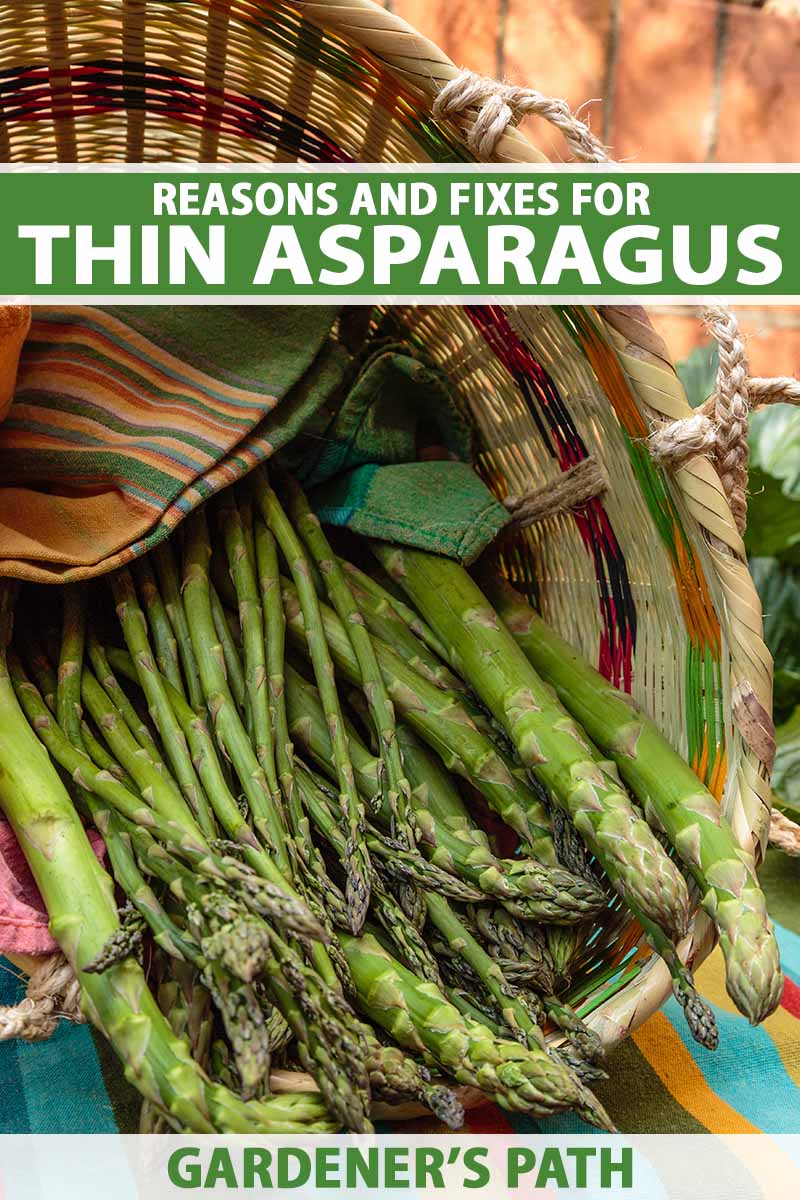
We link to vendors to help you find relevant products. If you buy from one of our links, we may earn a commission.
If this happens, don’t panic! Once you identify the source of the problem it shouldn’t be too tricky to fix. Read on to learn about causes and solutions for thin asparagus spears.
Why Is My Asparagus Thin?
Healthy roots, or crowns, are key to growing thick, abundant spears.
While asparagus isn’t super high-maintenance once it’s established, it requires nutrient-rich soil, adequate water, and ample sunlight to thrive.
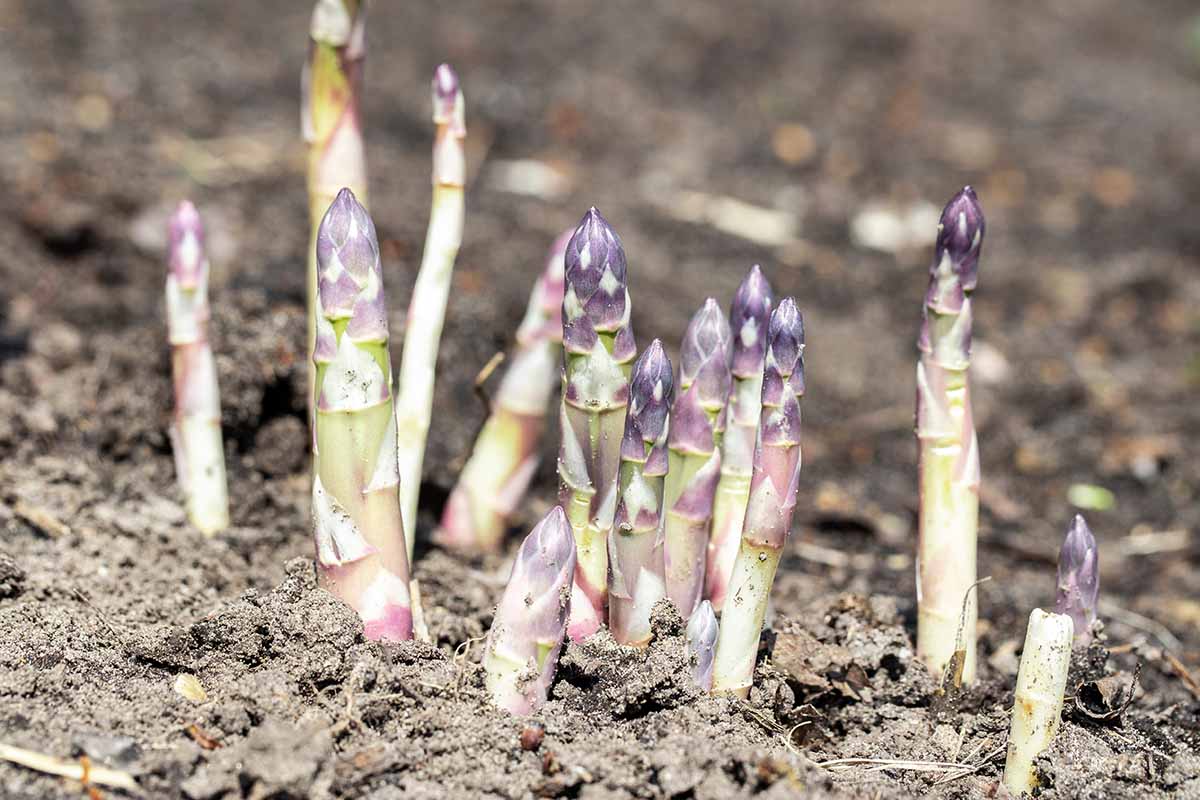
If you regularly notice thin spears, it is likely that one thing or another has resulted in less than ideal growing conditions. This leads to weaker roots, which may struggle to produce healthy stalks.
There are a few factors that could cause this to happen, and narrowing in on the cause can be helpful in finding an appropriate solution.
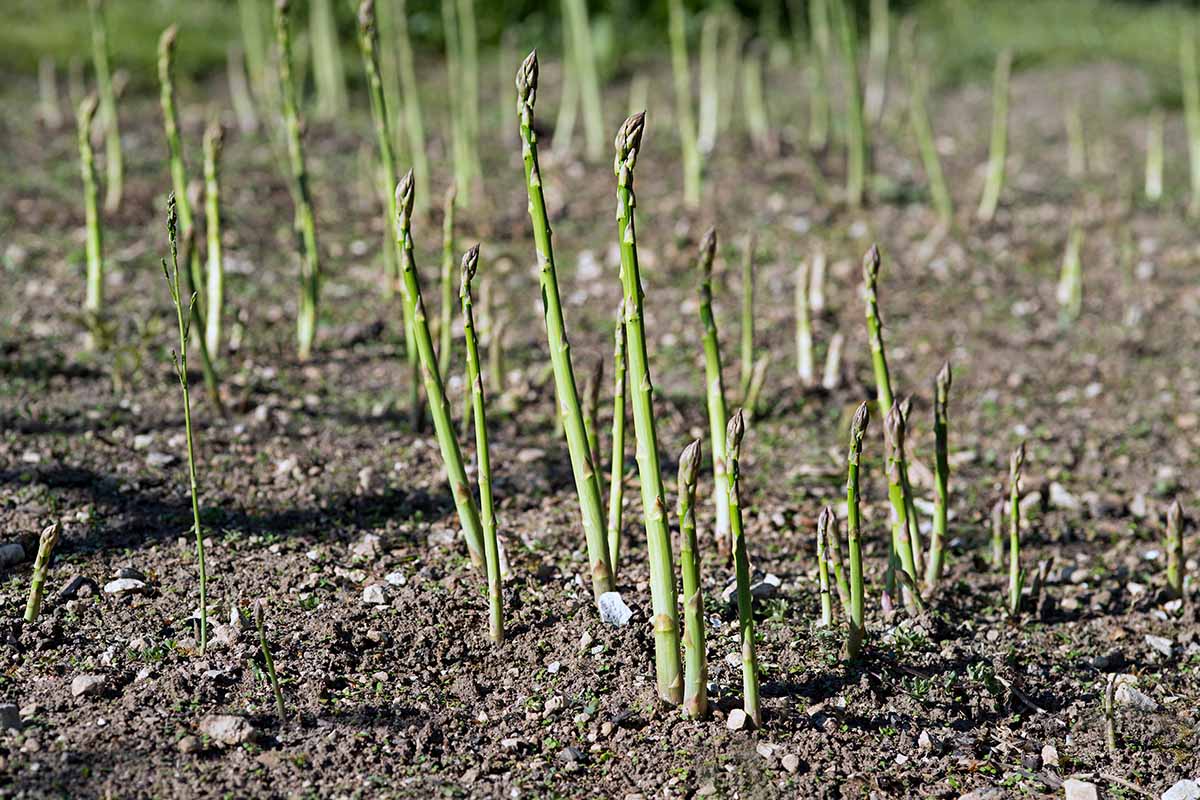
Let’s take a look at the common culprits, to determine what you might be dealing with, and how to resolve it.
1. Not Planting Deeply Enough
Asparagus crowns prefer to be buried a few inches into the earth. They should be planted in rows about eight inches deep, so the shoots are facing up.
Cover crowns with three to five inches of soil, adding more as the shoots emerge until the trench is filled in.
If you notice the crowns are not quite deep enough, don’t fret, just add a couple of inches of soil until they are appropriately covered.
Check out our comprehensive guide to learn more about planting and growing asparagus.
2. Lack of Water
These plants are moderately drought tolerant and will survive without a lot of water, but dry conditions will cause them to grow more slowly and produce thinner, weaker stalks.
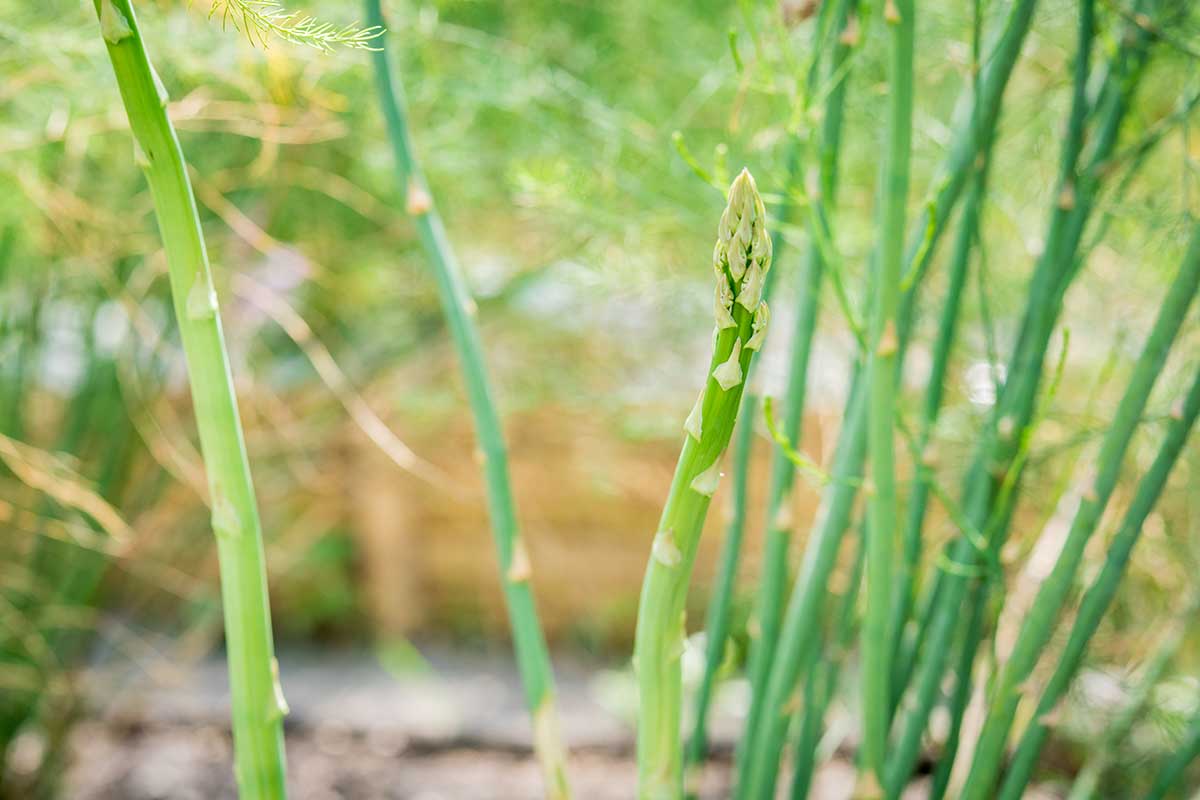
During the first couple of growing seasons, plants should receive one to two inches of water per week. Older plants need about one inch per week.
Water once or twice each week, or whenever the top inch of soil feels dry.
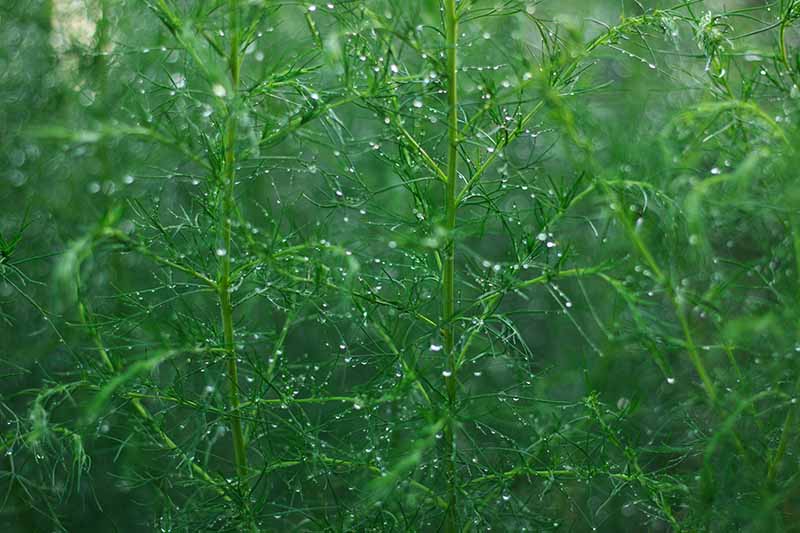
Since the crowns may be buried several inches below the soil, it is important to water deeply enough for the moisture to reach the roots.
3. Nutrient Deficiency
These heavy feeders should be planted in nutrient-rich soil amended heavily with compost.
Personally, I am not a fan of synthetic fertilizers and don’t use them in my garden. I have found that side dressing the garden bed with about an inch of compost each season seems to do the trick.

Once the spears begin to emerge, I also like to apply a thick mulch to build nutrients over time while also helping to retain moisture in the soil.
I personally use grass clippings, which are high in nitrogen and break down quickly. But straw, hay, bark, or shredded leaves will all work too.
If you choose to fertilize, do so in fall or early spring before shoots emerge, using an all-purpose organic fertilizer.
It is useful to add amendments high in phosphorus such as bone meal, aged manure, or rock phosphate to support healthy root growth. These can be added into the trench when planting, or sprinkled around the bed each spring.
This slow-release all-purpose fertilizer from Dr. Earth is made from natural, organic materials, and includes both bone meal and rock phosphate in its formula.
Dr. Earth All Purpose Fertilizer
It’s available in four-pound bags from Terrain.
4. Overharvesting
Even if your plants are producing the thickest possible spears, after about eight weeks, they will naturally reduce in thickness to about the size of a pencil and start to fern out.
This is a sign that it’s time to stop harvesting.
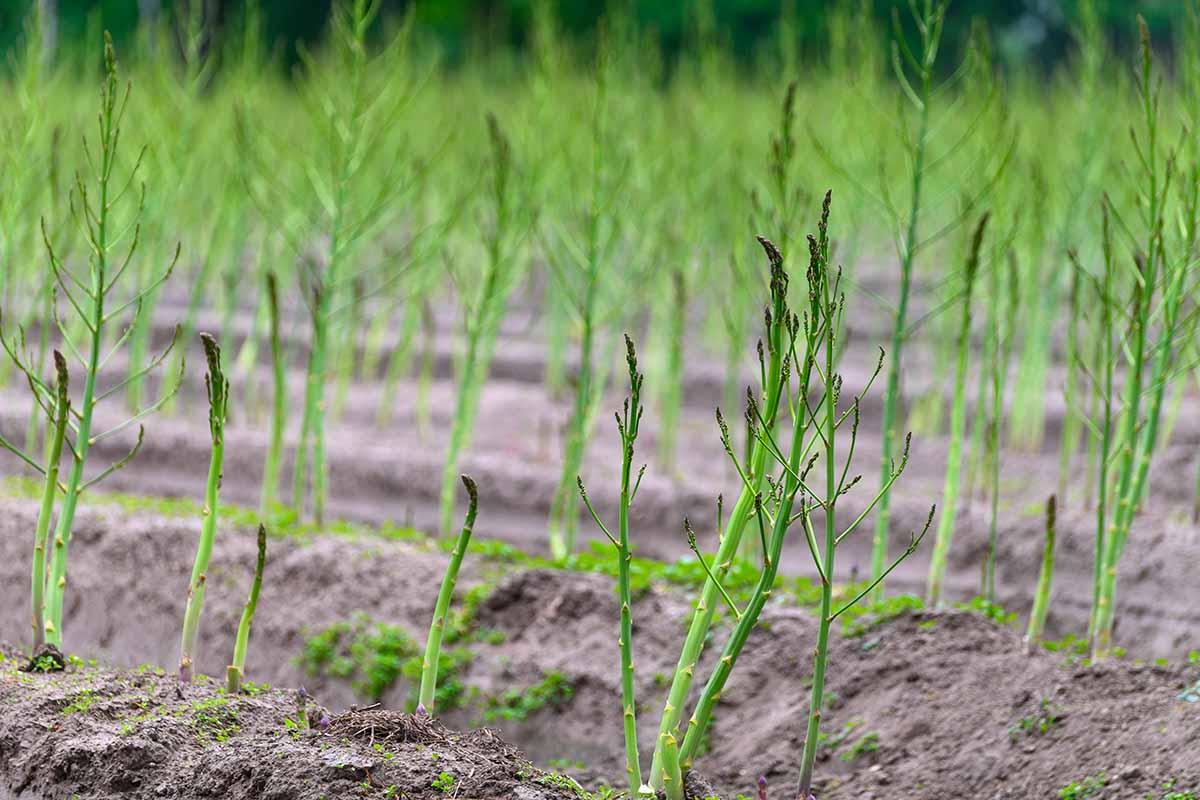
And while it may be tempting to cut back the long, fern-like foliage that grows after harvest season ends, resist the urge to do so until the fall, when the leaves yellow and begin to die back.
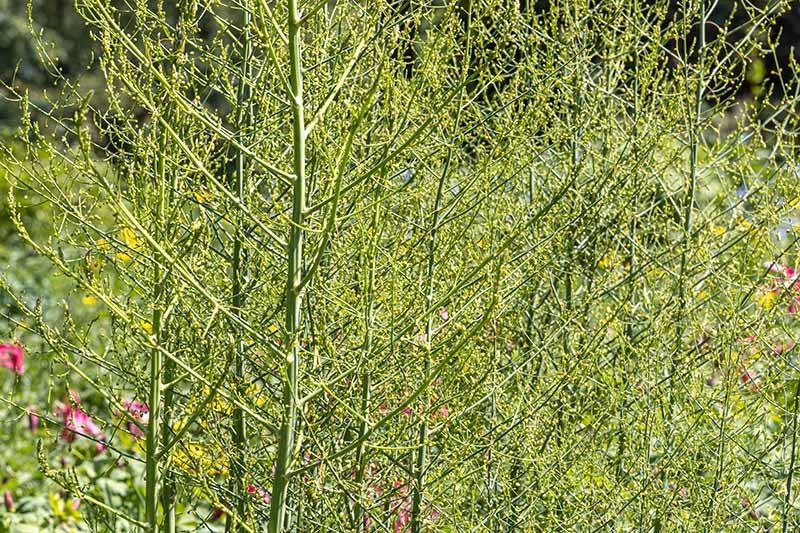
The foliage is important for photosynthesis, providing the crowns the nutrients they need to stay strong for the following season.
5. Age
Remember that it takes a few years for asparagus plants to be ready for harvest. These perennials need a few years to develop strong roots before they are ready to produce a full, thick crop.
Spears will be very thin during the first couple of seasons of growth. Harvesting is not advised for at least two years after planting, and should be done sparingly if at all in the third year.

Conversely, you may notice plants that are 10 or more years old start to drop in production and produce thinner spears. This is because the crowns, which are connected under the soil by rhizomes, multiply over time and become crowded.
Every five to 10 years, you can give your plants more space by dividing them and spreading them out. After the fronds have died back in the fall, dig up and separate the crowns using a garden knife or shears, and replant them in a new spot.
If the spears still appear thin and sparse, they may be nearing the end of their life cycle. In this case, it may be time to replace them all together.
No Cause for Alarm
When asparagus spears are looking thin, there is no need to fret. As long as you are maintaining good growing conditions and harvesting practices, the problem should work itself out.

The good news is, even if you do end up with a season or two of skinny spears, they are still perfectly edible and quite delicious!
Do you have tips for growing thick asparagus? We would love to hear them in the comments below!
Check out these articles next to learn more about growing healthy and productive asparagus:
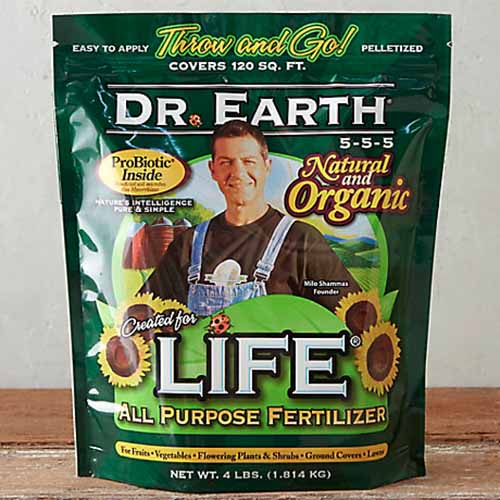
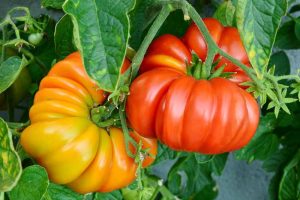
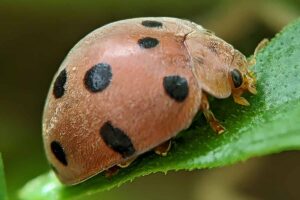

Apparently it’s just the female Asparagus that are the thin ones. I prefer them anyway as you get more heads for better presentation on the plate.
Male plants do typically produce thicker spears and larger yields. You can read more about the differences between male and female asparagus plants in our guide.
I love the way the author denigrated regular fertilizer by calling it “synthetic”. That is nothing more than a blatant lie. Real fertilizer is rated by how much nitrogen, phosphate and potassium it delivers to plants. In the fertilizer photo with this article, that rating is 5-5-5, a very weak fertilizer. You are better off buying regular fertilizer with a 10-10-10 rating. It will cost less than what the author is selling and you’ll get fertilizer 2x stronger than the 5-5-5 junk. You can get that just by adding compost and manure.
Synthetic fertilizer is typically manmade and derived from minerals and other inorganic materials whereas organic fertilizers are just that, derived from living, carbon-based materials. Both varieties might be rated with an NPK ratio as you described if purchasing a packaged product. And you are correct – aged compost and manure are in fact recommended examples of organic fertilizers! A stronger fertilizer with twice the NPK rating could certainly be used, but it isn’t necessary. Hope this helped to clear up some confusion for you.
My friend’s asparagus grows amazingly. Their garden is sandy. Does sand help?
Yes, asparagus tends to do well in sandy soil! See our guide for growing tips.
i love the these very helpful articles! As a complete novice in the art of growing asparagus, I planted Mary Washington cultivars from seed in 2022. When they were ready to transplant into the garden, I failed to separate the seedlings and thin them out, not realizing they needed their own space! There are 14 or so plants sharing about 6 inches of space, but they look healthy without any disease. However, the stalks are quite thin. I don’t plan on harvesting until next year or even the following year. Should I separate the plants now and then cut back… Read more »
Hi Angela, Thanks for reading our articles, we’re glad you’re finding them helpful! It does sound like there are too many plants in one spot for the long term. However the best time to transplant is spring, so depending on how close you are to summer-like weather, you might want to wait to transplant them until next year. It can be hard for plants to acclimate to transplanting once the weather is hot. You can get some great guidance on transplanting asparagus in our article – you might want to read it now so that you know what to do… Read more »